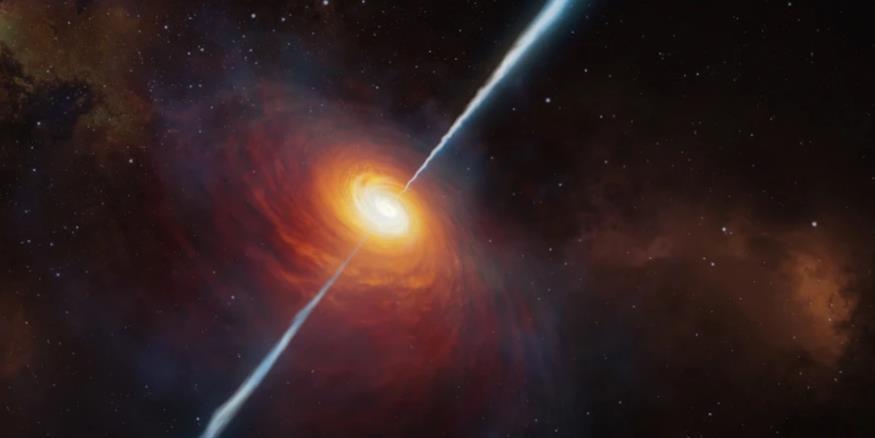Black Holes

What is a black hole? Is it even a hole and why is it black?
"A black hole is a place in space where gravity pulls so much that even light cannot get out. The gravity is so strong because matter has been squeezed into a tiny space. This can happen when a star is dying."
"Because no light can get out, people can't see black holes. They are invisible. Space telescopes with special tools can help find black holes. The special tools can see how stars that are very close to black holes act differently than other stars."
NASA</p>
Most of the information we have about black holes is:
Their location
Information by inference, i.e. how stars and masses are influenced and or affected by this think called a black hole
Energy that is emitted(?) by the entity called a black hole.
Firstly their location. This appears to be, for the most part, the centre of galaxies. It seems that all galaxies, or most of them we have observed, have a black hole at their centre.
The Milky Way, The galaxy we reside in for example, apparently has a massive black hole at its center. This is in the region of Sagittarius and it is called Sagittarius A*. Most black holes (BH) we know of have been given a name and an asterisk (star) to distinguish them from other masses such as stars and planets.
Second, it is the planets and masses that surround the BH which helps to locate that it IS a BH and its size. The one at the center of our galaxy is around 4000 times the size of our sun so it is BIG.
"How Big Are Black Holes?
Black holes can be big or small. Scientists think the smallest black holes are as small as just one atom. These black holes are very tiny but have the mass of a large mountain. Mass is the amount of matter, or "stuff,""in an object.
"Another kind of black hole is called "stellar." Its mass can be up to 20 times more than the mass of the sun. There may be many, many stellar mass black holes in Earth's galaxy. Earth's galaxy is called the Milky Way."
"The largest black holes are called "supermassive." These black holes have masses that are more than 1 million suns together. Scientists have found proof that every large galaxy contains a supermassive black hole at its center. The supermassive black hole at the center of the Milky Way galaxy is called Sagittarius A. It has a mass equal to about 4 million suns and would fit inside a very large ball that could hold a few million Earths"
NASA</p>
But the question still remains, What IS a black hole?
Speculation extends from a ever increasing mass as a result of pulling in surrounding stars to a portal to another parallel universe or an emergence somewhere else in this universe. But no one currently can say with certainty what it is.
"How Do Black Holes Form?
Scientists think the smallest black holes formed when the universe began."
"Stellar black holes are made when the center of a very big star falls in upon itself, or collapses. When this happens, it causes a supernova. A supernova is an exploding star that blasts part of the star into space."
"Scientists think supermassive black holes were made at the same time as the galaxy they are in."
"If Black Holes Are "Black," How Do Scientists Know They Are There?"
"A black hole can not be seen because strong gravity pulls all of the light into the middle of the black hole. But scientists can see how the strong gravity affects the stars and gas around the black hole. Scientists can study stars to find out if they are flying around, or orbiting, a black hole."
"When a black hole and a star are close together, high-energy light is made. This kind of light can not be seen with human eyes. Scientists use satellites and telescopes in space to see the high-energ light."
NASA
Since black holes only affect that which is in the physical universe it would seem that to find out what is actually happening there an OT would likely have to go there and find out and return and report their findings. That is if they have not done that already and or are aware of the result.
In fact, given the size of the physical universe and the number of beings residing within it, it is likely many have successfully solved the mystery of the black hole.
But likely none from this planet, although, ... Utilizing the processes from Route one (Book: Creation of Human Ability.) One could simply include, "Be in a black hole." And find out for certain and report back what they have found.
Another mystery solved!
https://www.nasa.gov/audience/forstudents/k-4/stories/nasa-knows/what-is-a-black-hole-k4.html
https://www.facebook.com/watch/?v=539106944543961
https://www.technologyreview.com/2021/03/16/1020859/supermassive-black-hole-jets-x-rays/